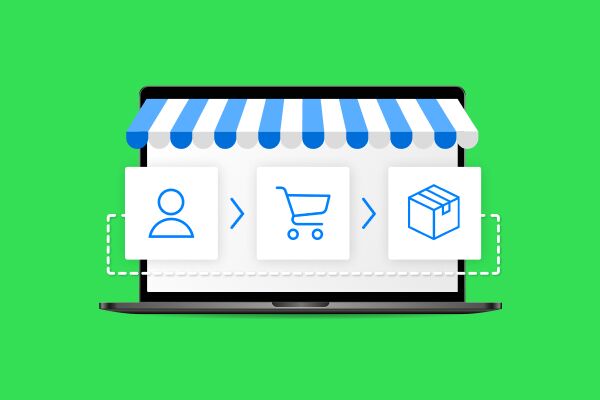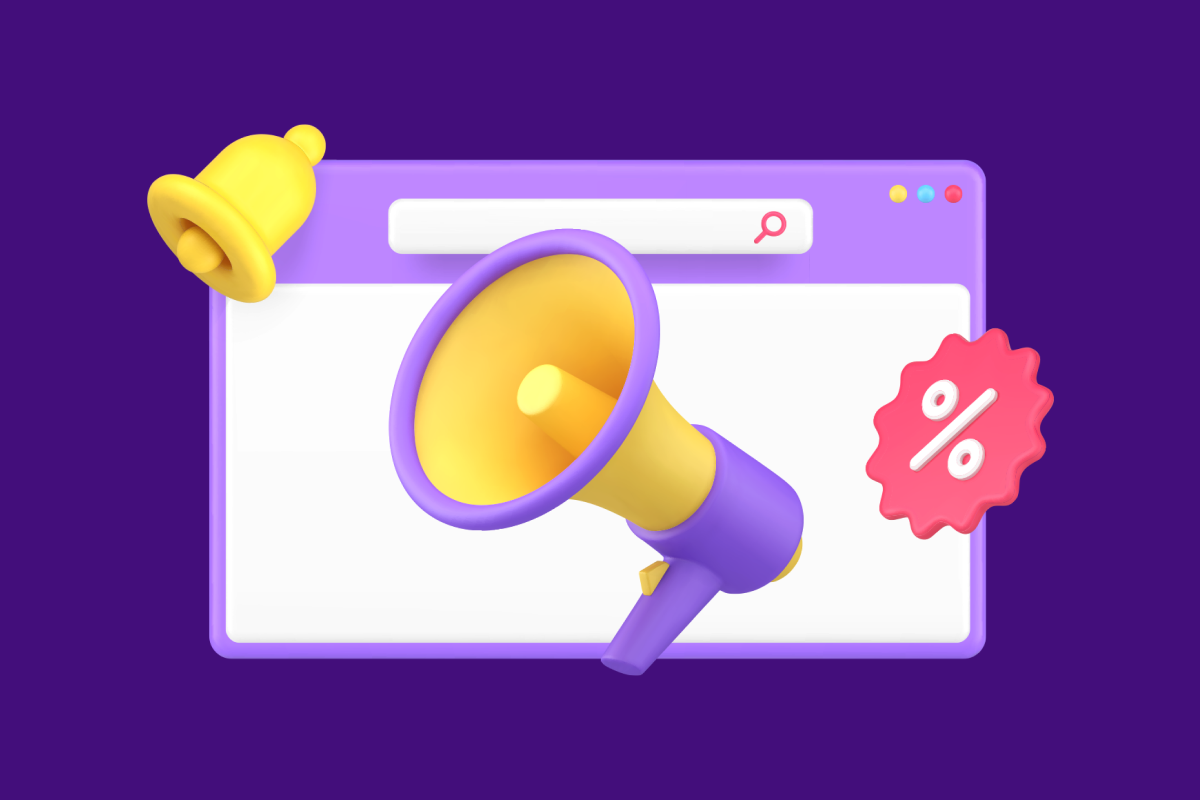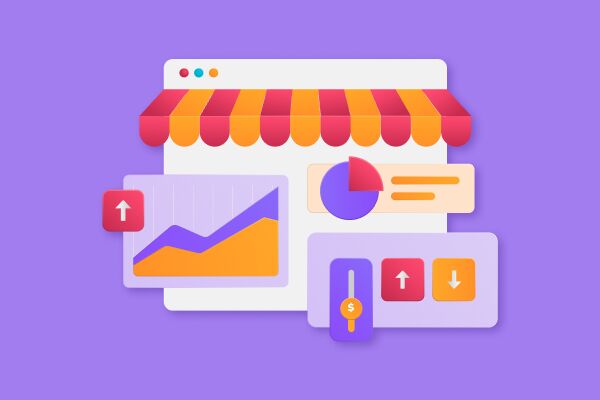Dropshipping is ideal for those looking to launch an online store quickly and without major upfront investments. We’ve put together a detailed guide to help you start selling using this business model.
Dropshipping is a retail model where an online store acts as an intermediary between the customer and the supplier. The store attracts buyers and processes their orders, then passes the order details on to the supplier, who ships the products directly to the customer.
The dropshipper doesn’t need to purchase stock in advance, rent warehouse space, or manage delivery logistics. Their main role is to promote products and attract customers, earning a profit from the markup added to the wholesale price. Everything else is handled by the supplier.
Advantages of Dropshipping
- Low startup costs. There's no need to purchase inventory upfront, rent warehouse space, or maintain an office — all of which are major expenses for traditional online shops. However, it's worth noting that running a store without any investment isn't realistic either: you'll still need to set up a sales platform and fund advertising campaigns.
- Reduced risk. A dropshipper can stop selling, switch niches, or pursue another venture at any time. There’s no unsold stock sitting in storage and no significant capital tied up, meaning less financial risk overall.
- Greater flexibility. Dropshipping makes it easy to run multiple stores at once, each offering different types of products. You can even launch a large-scale store by simply aggregating product lists from various suppliers within a niche. The model also benefits from the “long tail” effect — the ability to profit from a wide range of niche or low-demand items thanks to an extensive catalogue.
- Focus on marketing. With logistics and delivery handled by the supplier, you’ll have more time to invest in promoting your products. A strong marketing strategy can significantly increase your revenue.
Disadvantages of Dropshipping
- Limited control over processes. As a dropshipper, you have no way of checking product quality or delivery times firsthand. For example, you won’t be able to inspect items for defects before they’re shipped. These aspects depend entirely on how reliable your supplier is, which makes it crucial to partner with trustworthy companies.
- Risk of dealing with dishonest suppliers. A supplier can go from being your business partner to becoming your direct competitor. Since they have access to your customer data, they could use it for their own marketing — such as adding your buyers to their email list and targeting them with direct offers. The supplier also has the advantage of offering lower prices, as they can afford to sell with a smaller markup.
- Responsibility for others’ mistakes. While you don’t manage delivery or fulfilment, you are still the face of the business in the eyes of the customer. This means any issues — delays, damaged goods, or wrong orders — will fall on you to resolve. And often, it won’t matter to the customer whether the problem was your fault or the supplier’s.
How Dropshipping Works: A Step-by-Step Guide
Dropshipping is a great way to get started in e-commerce. By outsourcing part of the operations to a supplier, you simplify the management of your online store. Still, to launch your business successfully, there are several key steps every aspiring dropshipper needs to take.
Choosing a Niche
You can sell nearly any type of product using the dropshipping model, so your choice of niche largely depends on your personal interests. Think about the kinds of products you find engaging. Perhaps you have a hobby or in-depth knowledge of something like skincare. This can give you a real advantage when it comes to both selecting your niche and making it work.
Products don’t sell themselves — your success depends on how well you understand what you're offering. You need to know the benefits of specific items, who they’re best suited for, how to use them, and more. If you’re already an expert in the field, you’ll have a stronger foundation for making sales.
If you don’t have any particular preferences, consider focusing on a niche with trending products. Selling in a popular category can make it easier to find customers. However, popular niches usually come with stiff competition. You'll need to invest time in researching the market to identify trending items. The ideal scenario is discovering a niche where the products haven’t yet peaked in popularity — but are likely to trend soon.
Finding a Supplier and Signing an Agreement
The success of your dropshipping business depends heavily on the reliability of your suppliers, so it’s important to approach this step with care. The key factors to consider when evaluating potential partners are product quality, cooperation terms, and trustworthiness. It can be difficult to assess a supplier at first glance, so take time to communicate with them and read through customer or partner reviews. Also, consider how exclusive the supplier’s products are. If the same items are sold in dozens of other stores, you'll face tough competition, which can make it harder to succeed.
Look for suppliers via Google, industry-specific directories, and social media platforms. Suitable dropshipping suppliers include wholesalers, distributors, importers, or manufacturers. Ideally, try to reach out to manufacturers directly and see if they’re open to this type of partnership. If they are, you might secure better terms and even become one of their official distributors.
Once you've chosen your supplier, make sure to sign a cooperation agreement. This should clearly outline the responsibilities of each party, so you have a documented basis to refer to in case of disputes. A formal agreement is also useful for registering and legitimising your business activities.
Creating a Website for Sales
To start selling your supplier’s products, you’ll need your own platform with a product catalogue where customers can place orders. Most large marketplaces don’t work with dropshippers, which means your main options are social media and a standalone website.
Many dropshippers start with an Instagram shop because it’s quick and easy to set up. However, this platform isn’t designed for full-scale e-commerce. It lacks essential features such as a shopping cart and integrated online payments. There’s also the ongoing risk of your page being blocked, which could undo all your efforts in an instant.
For long-term growth and a smoother customer experience, it’s best to launch your own online store with a dedicated website. Upload your supplier’s price list, complete with product descriptions and images. This way, shoppers get a clear, easy-to-navigate catalogue and can place orders independently. You can then promote your website through various sales channels, including social media — greatly increasing your reach and sales potential.
Keep in mind that some suppliers may want to see where you plan to sell their products before entering into a partnership. They might ask you to show them your website, social media page, or any other sales platform. In this case, you’ll need to create your sales platform shortly after choosing your niche — even before reaching out to suppliers.
Promoting Your Products
The core responsibility of a dropshipper is finding customers. This becomes your main focus once your online store is up and running. You’ll need to promote your website through search engine optimisation, set up paid advertising campaigns, grow your presence on social media, and more. If you're not yet familiar with digital marketing, take time to explore free resources available online. There’s a wealth of guides and tutorials that can help you boost traffic to your store and improve your sales performance.
Dedicate as much time as possible to marketing — your income will directly depend on how well you promote your shop. In some cases, you may want to turn to advertising specialists for help. For example, SEO is a highly effective way to attract long-term traffic, but it can be complex to implement. Many dropshippers choose to work with SEO professionals, and that’s perfectly fine.
That said, don’t rush to hire marketing agencies. Start by researching the available promotion channels on your own, and test the ones that resonate with you. This hands-on approach will help you better understand your market and make smarter decisions as your business grows.
Managing Records
To ensure high-quality customer service and smooth collaboration with your partners, keeping accurate records is essential. You need to collect and organise all order and customer data carefully so it can be passed on to your supplier for fulfilment. The best tool for this is a CRM system.
A good CRM allows you to build a detailed customer database, which helps improve both sales efficiency and marketing efforts. It also enables inventory tracking — something that may become important if you decide to synchronise stock levels with your supplier in the future.
Scaling Your Business
Once your operations are running smoothly and you start generating consistent sales, it's time to think about scaling. One of the key advantages of dropshipping is the ability to partner with multiple suppliers, allowing you to greatly expand your product range. Just make sure this doesn’t conflict with any terms set in your existing agreements.
Alongside increasing your assortment, you can also branch out to new sales channels and platforms. This multi-channel approach can significantly boost your sales and broaden your customer base.
Conclusion
If you're looking to start selling online, dropshipping is a great way to get started. The model allows you to launch your own business with minimal upfront costs and gradually scale it over time. Use this guide as your starting point and take your first steps as a dropshipper. Ready to begin? Submit a request on the Cartum website to create a free online store for your future e-commerce business.





